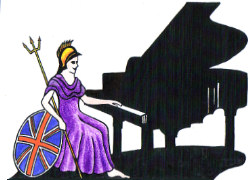Teachers, Accompanists and Piano Entertainers in the UK

UK Piano Page

County Monaghan
Republic of Ireland
Piano Centre is the place for Yamaha and
4A Empress Park
Empress Road, Southampton
Southampton, Hampshire SO14 0JX
England
Established in 2004, we supply and repair the
The Estate Yard
Eridge
Royal Tunbridge Wells, Kent TN3 9JR
England
The Piano Shop Kent is near Tunbridge Wells on the
The Hurst Crouch
Borough Green
Sevenoaks, Kent TN15 8TA
England
We offer some of the lowest prices in Europe for
Unit 60 The Triangle
Wolverton Park
Milton Keynes, Buckinghamshire MK125FJ
England
We are a family run music shop in Wolverton,
Music Festival for performers and guests Our 10th
18-06-2022 01:30PM
The Morecambe Bay Piano Group was set up to extend
11-12-2021 02:00PM
The Morecambe Bay Piano Group was set up to extend
08-01-2022 02:00PM
The Morecambe Bay Piano Group was set up to extend
12-02-2022 02:00PM
Polyester and Pianos.
Polyester began as a group of polymers in W.H. Carothers' laboratory. Carothers was working for DuPont at the time when he discovered that alcohols and carboxyl acids could be successfully combined to form fibres.
Polyester as a polish is a three-component paint that utilizes the resin, catalyst and accelerant. Thanks to its tight molecular structure, polyester has a solid content which gives the product superior mechanical and chemical resistance to scratches
The application of Polyester finishes requires specialized equipment and machinery to produce a quality product. Polyester is specified when high scratch resistance and 100% sheen are needed.
Cleaning Polyester on Pianos
For everyday cleaning, wipe your piano with a clean, damp (not wet) cloth, followed by a clean dry cloth. If more stubborn soils do get on the finish, you may try dipping your cloth in a mild soap and water solution before wiping, and then follow that with a cloth dampened in clear water, and then the dry cloth.